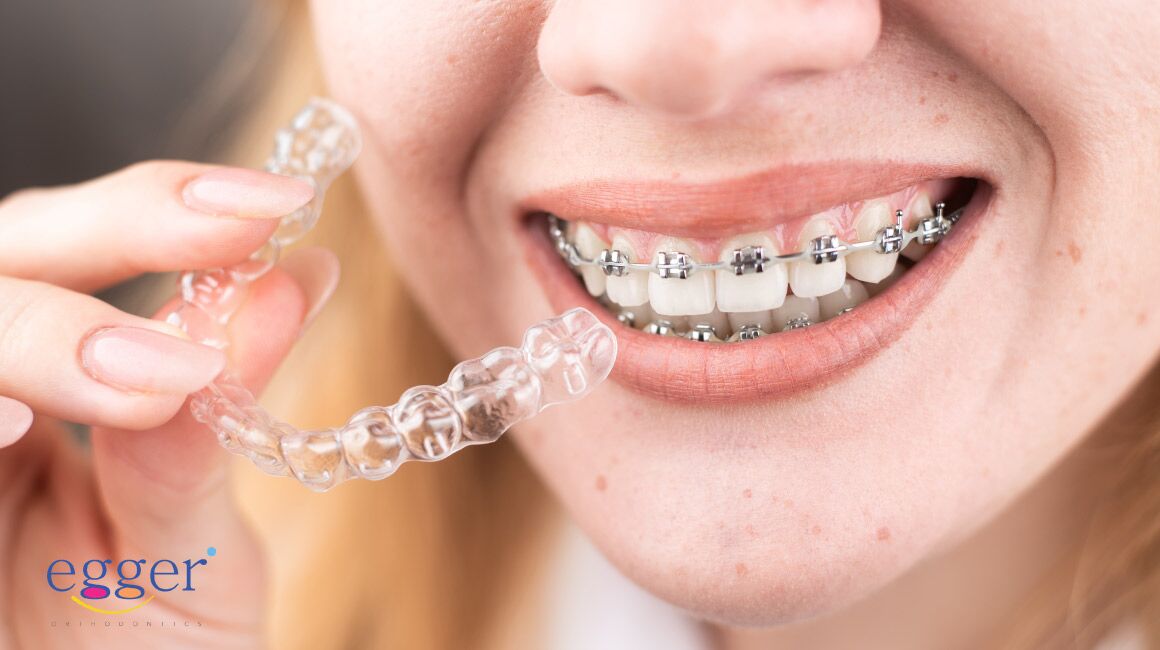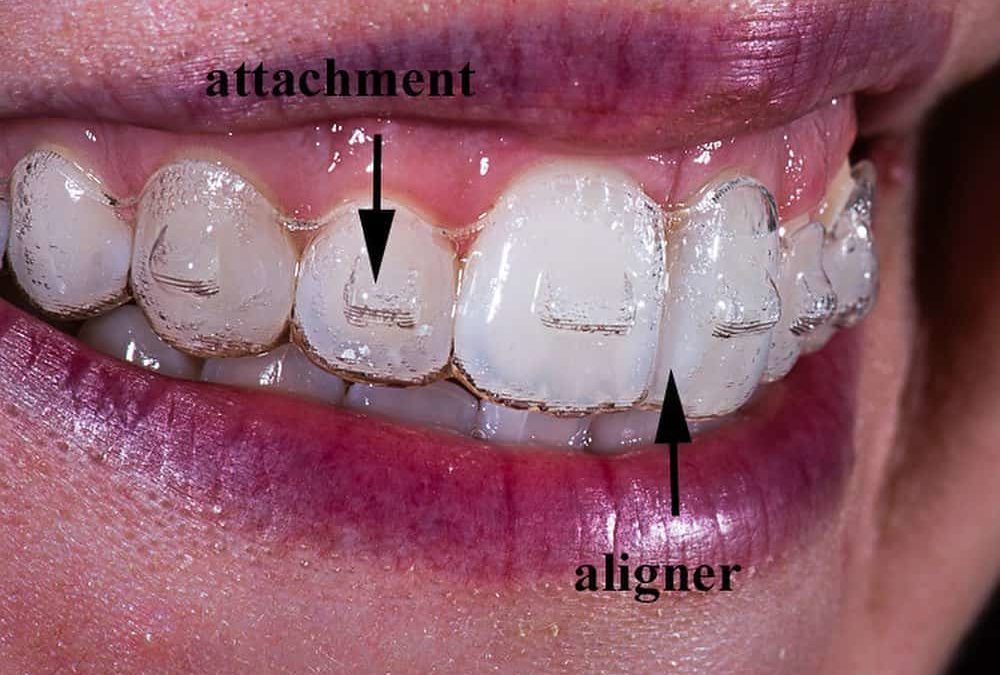Invisalign for Teenagers: A Modern Solution to Straightening Young Smiles
Invisalign for Teenagers: A Modern Solution to Straightening Young Smiles
Blog Article
Invisalign vs. Conventional Braces: Which Alternative Is Right for You?
When thinking about orthodontic treatment, the choice in between Invisalign and typical dental braces provides a number of vital variables that merit cautious evaluation. Invisalign offers a very discreet choice with detachable aligners, while standard dental braces provide an extra noticeable yet efficient service for severe imbalance.
Overview of Treatment Alternatives

In comparison, conventional dental braces include metal braces and wires that are bound to the teeth. This method uses continual pressure gradually to achieve alignment. While efficient for intricate orthodontic problems, standard dental braces call for routine check outs for adjustments and can position difficulties in preserving dental hygiene as a result of the problem of cleansing about braces and cables.
Both choices have their merits, and the choice typically depends upon specific oral conditions, lifestyle preferences, and client conformity. Eventually, speaking with an orthodontic specialist is essential for figuring out one of the most ideal therapy strategy customized to individual needs. Comprehending the subtleties of each choice can dramatically affect the total success of orthodontic treatment.
Visual Factors To Consider
A substantial factor affecting the selection in between Invisalign and typical braces is the visual charm each therapy supplies. Invisalign aligners are crafted from clear plastic, making them virtually undetectable when put on. This very discreet appearance is especially interesting young adults and grownups that may really feel uneasy regarding their orthodontic therapy. The capacity to keep a natural smile throughout the placement process can significantly enhance the patient's confidence in social and professional settings.
On the other hand, typical dental braces contain steel brackets and wires, which can be more recognizable. While innovations in orthodontic modern technology have actually led to the advancement of smaller sized brackets and colored elastics, traditional dental braces still maintain a more noticeable profile. For some people, the presence of dental braces might hinder them from looking for necessary treatment.
Eventually, the choice between Invisalign and traditional dental braces might rest on individual preferences pertaining to aesthetics. Individuals that prioritize discernment commonly favor Invisalign, while those who are much less worried about exposure may go with traditional braces. Understanding the aesthetic ramifications of each choice is important for making an educated choice that lines up with one's way of life and choices.
Convenience and Convenience

In regards to ease, Invisalign aligners are detachable, making it possible for patients to enjoy their preferred foods without restriction and maintain optimal oral hygiene. Cleaning and flossing are streamlined, as the aligners can be secured during these regimens, whereas conventional dental braces call for mindful steering around cables and braces.
Additionally, Invisalign's modern system enables Discover More fewer orthodontic gos to. Clients normally receive multiple collections of aligners at the same time, which can enhance the treatment procedure and minimize time spent in the orthodontist's chair. On the other hand, standard braces require routine adjustments, making them much less practical for those with active routines. Invisalign. Overall, the comfort and convenience of Invisalign make it an enticing option for many people seeking orthodontic treatment.
Treatment Period and Efficiency
While both Invisalign and traditional braces work in correcting dental imbalances, the duration of therapy can vary considerably in between both alternatives. Commonly, Invisalign treatment can take anywhere from 12 to 18 months, relying on the complexity of the instance. The clear aligners function by progressively moving teeth into their preferred placements, and regular follow-ups with an orthodontist help ensure development remains on the right track.
On the other hand, typical braces typically require a longer dedication, normally varying from 18 months to 3 years. This is because of their set nature and the use of cables and brackets, which can be extra effective for severe misalignments and complicated situations (Invisalign). The treatment efficiency of standard dental braces is well-documented, as they enable for specific changes and better control over tooth motion
Inevitably, the selection in between Invisalign and standard dental braces might depend upon both the expected treatment duration and the specific dental concerns handy. Consulting with an orthodontist is essential, as they can offer tailored recommendations based on individual demands, ensuring the chosen approach straightens with wanted durations and results.
Expense Comparison and Insurance Options
Price plays a substantial duty in the decision-making procedure for individuals taking into consideration orthodontic therapy, whether going with Invisalign or conventional dental braces. On standard, the expense of Invisalign ranges from $3,000 to $8,000, while traditional braces generally set you back in between $2,000 and $6,000. Factors affecting these expenses consist of the complexity of the case, the duration of therapy, and geographical location.
Many dental insurance strategies give partial protection for orthodontic therapies, but the specifics can vary review widely. Generally, conventional dental braces may be a lot more frequently covered by insurance coverage strategies contrasted to Invisalign, which some insurance firms categorize as an aesthetic treatment.
Additionally, numerous orthodontic practices use flexible payment strategies, making both treatment choices a lot more accessible. Clients ought to make inquiries about prospective financing choices and discount rates for ahead of time blog here payments. Assessing the overall price, consisting of insurance policy benefits and payment plans, is vital for making an educated choice that aligns with both aesthetic choices and spending plan considerations.

Verdict
In summary, the choice between Invisalign and traditional dental braces pivots on several elements, consisting of visual choices, comfort, treatment period, and cost. Invisalign supplies a discreet, removable alternative that facilitates oral health and nutritional versatility, while standard braces may be a lot more suitable for intricate oral problems and commonly come with a lower price factor. Inevitably, examination with an orthodontist is vital to analyze specific scenarios and identify the most ideal therapy option for attaining ideal oral positioning.
When considering orthodontic therapy, the option between Invisalign and typical braces presents numerous crucial variables that merit careful evaluation.Contrasting Invisalign and conventional braces exposes distinct therapy options for orthodontic improvement.While both Invisalign and standard braces are efficient in correcting oral misalignments, the period of treatment can vary dramatically between the 2 choices.Price plays a considerable duty in the decision-making process for people thinking about orthodontic therapy, whether choosing for Invisalign or traditional dental braces.In summary, the option in between Invisalign and conventional dental braces hinges on numerous elements, including visual preferences, comfort, therapy period, and cost.
Report this page